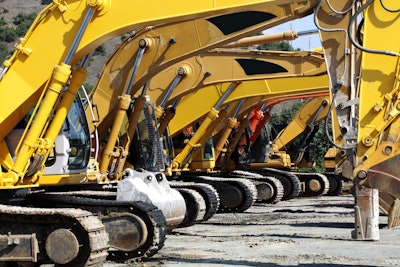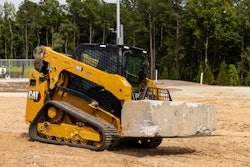
 John Ryneska, director of OEM & strategic initiatives at Trader Interactive, parent company of Equipment Trader.Trader Interactive
John Ryneska, director of OEM & strategic initiatives at Trader Interactive, parent company of Equipment Trader.Trader Interactive
It’s a trend that is set to repeat itself this year, according to John Ryneska, director of OEM & strategic initiatives at Trader Interactive, who sat down with Equipment World to share his new- and used-construction equipment outlook for 2024. Trader Interactive is the parent company of Equipment Trader, one of the largest online marketplaces for new and used heavy equipment.
“Interest rates and bank lending standards have really stunted demand for a lot of the smaller stuff,” Ryneska says. "For larger stuff – your wheel loaders, excavators, dozers – I think it’s all going to hold steady. The nonresidential sector has been steadily climbing, and that’s because billions of dollars are being dumped into infrastructure and mega projects right now.”
[Related Content: Best-Selling Construction Equipment By State of 2023]
Cash is King
To circumvent those high interest rates and the associated risk that comes with loans, Ryneska says, more contractors are turning toward cash purchases.
“Buyers have already pivoted toward cash transactions, and it's not even just tied to that personal consumer buying a $30,000 skid steer, for instance. It’s also for some of these government-run programs where cash is paying for quarter-million-dollar loaders, versus financing.”
And if buyers aren’t willingly paying with cash, it's likely because they’ve run out of options.
“They’re getting rejected by banks because they don’t have impeccable credit. So, if that purchaser has the cash flow, they’re making it happen. Otherwise, it's just lengthening the purchase cycle,” he says.
[Related Content: Contractors Reveal Their Equipment Buying Plans for 2024]
The Rental Hangover
Even though supply chains have normalized on the new equipment side, Ryneska notes that rental markets are still hungover from the equipment shortage of 2021 and 2022 and are disrupting used-equipment values and sales.
“They ended up holding on to this inventory for probably a year or two longer than they should have. And so now what you've got is this older inventory entering the market with much more wear and tear. The estimated resale value on these units is not aligning with consumer expectations.”
The higher-priced, higher-hour used equipment entering the market is now stunting demand, specifically for compact machines.
According to Equipment Trader data, 73 percent of buyers searching for small- to mid-sized equipment in 2023 spent 3 to 12 months in the research phase before making a purchase. That’s considerably longer than the 3 to 4 months buyers would spend on research just two years ago.
“When you’ve got people spending this much time on research, they’ve extended the sales cycle for several months. That’s having a ripple effect in the U.S. equipment market and speaks to how resale values have been trending down the past year.”
“There’s a nice steady river of inventory entering the market. When you have these units coming in at higher prices, and there’s just more to look at, I think, naturally, people are trying to find better deals.”
Ryneska says as we bid farewell to the seller’s market, customers should rightly challenge dealers and be cautious in their purchase decisions. He advises, “Don’t rush into anything. You’ve got more options now than you have in the last two and a half years. So, really be selective and request more information.”
Dealers Must Evolve
Despite the longer sales cycle and the customer gaining the upper hand, Ryneska still predicts another good year for manufacturers and dealers in 2024.
“Parts and service are still humming right now, and the rental market is probably the strongest it’s ever been,” he says. “I think, generally speaking, the times are good.”
But success won’t come without effort, Ryneska cautions. Unlike the past few years, this market requires active selling and the ability to meet changing customer expectations.
“Many dealers were order takers for about a two-year stretch,” he says. “In order to be competitive, especially with where the price points are and the availability of equipment now, they need to provide detailed inspection reports, certified used equipment and photo accounts to show that it is quality.”
From the current viewpoint, dealers who are prepared, proactive and continue to invest in technology will fair well. But those who continue to resist change will become obsolete.
“We still have a good percentage of dealers who are falling behind the times in not meeting those expectations of today’s online users, which have dramatically changed since we experienced the pandemic in 2020.”













